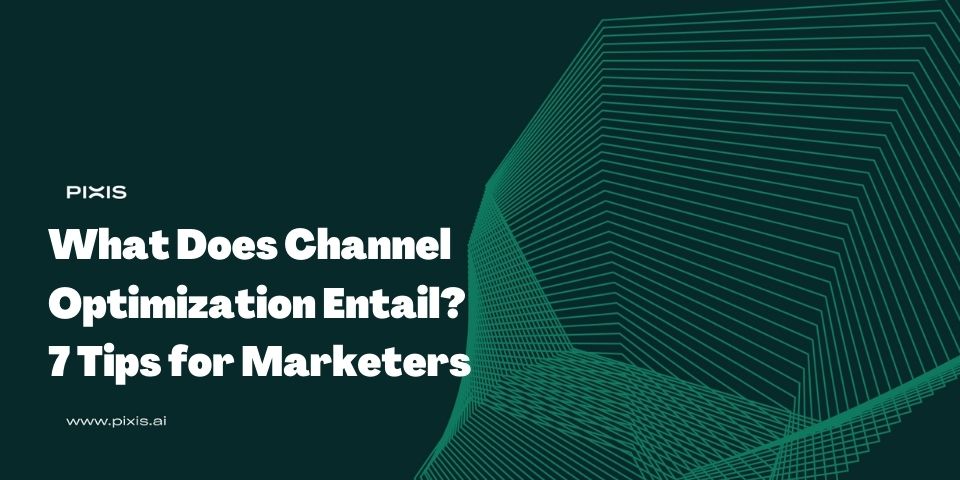8 Reasons Omnichannel Marketing Is Integral to Your Business
Your customers aren’t staying in one place. They’re scrolling through social media, checking emails, browsing your website, and maybe even stopping by your store on the same day. And they expect a seamless experience at every step.
If your brand doesn’t consistently appear across these touchpoints, you’re losing their attention (and likely their business). Omnichannel marketing makes every interaction feel connected, natural, and personalized so your customers stay engaged.
1. A Great Customer Experience Across Every Touchpoint
Today’s customers don’t think in channels—they think in experiences. And when those experiences feel fragmented, trust erodes and loyalty weakens. In fact, research from Salesforce shows that 65% of consumers expect companies to understand their unique needs and 79% expect a consistent experience across departments..
The problem is many businesses still operate in silos, with marketing, sales, and service teams each delivering disconnected interactions. That disconnect creates friction: confusing messaging, inconsistent branding, and repetitive conversations that frustrate and push customers away.
Omnichannel marketing bridges that gap by creating a unified experience across every touchpoint. Whether a customer clicks on an Instagram ad, chats with support, visits a retail location, or shops through an app, they should encounter the same tone, visuals, and quality of service at every step. This kind of continuity builds familiarity, trust, and ultimately, loyalty.
Take Sephora, for example. Their omnichannel experience allows customers to view in-store purchases online, access personalized recommendations across platforms, and even book beauty services through the app. The result is a cohesive customer journey that feels effortless, no matter where it starts or ends.
To make this work, you need both alignment and connectivity. That means developing a brand guide that ensures consistent voice, colors, and messaging, as well as syncing your customer data across systems. If someone browses a product on your website, your email or social ads can follow up with relevant suggestions. If they buy in-store, your CRM and loyalty program should reflect that behavior online.
2. A Boost in Conversions
A seamless experience across channels builds momentum. If a customer adds an item to their cart online, an email reminder or a social media ad can bring them back. If they engage with your brand on Instagram, a personalized discount via SMS might nudge them toward checkout. When every touchpoint reinforces the next step, there’s no reason for them to drop off.
Shoppers rarely buy the first time they see a product. Before deciding, they browse your website, check reviews on social media, open an email, and maybe even visit your store.
Here are different ways to make omnichannel marketing more effective and lower your acquisition costs:
- Use retargeting to recapture interest: Most visitors won’t buy on their first visit, but they might later. Retargeting ads on social media and Google keep your product top of mind, reminding shoppers of what they left behind and bringing them back when they’re ready.
- Personalize offers based on behavior: Leverage data to send the right message at the right time. If a customer browsed a product multiple times, a limited-time discount via email or SMS can provide the push they need. If they made a recent purchase, recommending complementary items can increase upsells.
- Optimize for mobile conversions: Many shoppers start on mobile but switch to desktop to buy—or vice versa. A seamless checkout across devices, plus mobile-friendly payment options like Apple Pay and Google Pay, removes friction and keeps conversions flowing.
- Unify messaging to build trust: A strong, consistent brand message across ads, emails, and social media reinforces confidence. If your website says one thing and your social ads say another, customers may hesitate
- Leverage social proof at key touchpoints: Customer reviews, ratings, and user-generated content build credibility. When shoppers see glowing reviews on Instagram and then again on your website, they’re far more likely to trust your brand and complete the purchase.
- Reduce steps in the purchase process: The easier it is to buy, the higher the conversion rate. One-click checkout and autofill forms make the process effortless, so there’s less chance of losing customers along the way.
To make omnichannel marketing more effective and lower acquisition costs, focus on creating a personalized experience that recaptures interest, builds trust through unified messaging and social proof, and removes friction at every step of the customer journey. According to Salsify’s 2024 Customer Research Report, nearly half of shoppers want an experience that combines in-store and online shopping.
3. Get Actionable Customer Insights
Omnichannel marketing isn’t just about being present on multiple platforms—it’s about understanding your customers across those platforms. And that starts with data. A truly effective omnichannel strategy is only possible when brands collect customer data in one place and use it to drive personalized, relevant interactions across every channel.
Every touchpoint (a social ad, website visit, in-store purchase, or support chat) generates valuable behavioral data. But if that data lives in silos, you’re left with an incomplete view. Centralizing it gives you the power to analyze customer journeys holistically and uncover insights that can inform smarter decisions.
With a unified data approach, you can answer key questions like:
- Where do most customers start their journey?
- Which channels are converting best?
- Where are drop-offs happeningm, and why?
- How does engagement across touchpoints influence buying behavior?
For example, if customers frequently click on Instagram ads but don’t convert, it may signal a mismatch between ad creative and landing page. If shoppers research online but buy in-store, you might test mobile coupons or in-app loyalty perks to bridge the gap.
The key is to move beyond reactive reporting and toward proactive optimization. A centralized analytics dashboard—integrating data from your website, CRM, social platforms, and point-of-sale systems—makes it easier to connect the dots and take action where it matters.
4. Expand Brand Visibility and Reach Across Multiple Platforms
Consumers are constantly flooded with brand messages while engaging across multiple platforms. If your brand isn’t showing up where your audience spends their time, you invite your competitors to capture their attention instead.
Crafting a strong presence involves creating consistent and engaging touchpoints. Using a mix of paid, earned, shared, and owned media can amplify your reach:
- Paid media (search ads, social promotions, display ads) puts your brand in front of the right audience at the right time.
- Earned media (press mentions, customer reviews, word-of-mouth) builds credibility and trust.
- Shared media (social media interactions, shares, and community engagement) turns customers into advocates.
- Owned media (your website, blog, email list) gives you control over your brand’s message and long-term engagement.
For example, McDonald’s keeps its brand highly visible by integrating its MyRewards program across mobile, email, and in-store interactions. Customers stay engaged through push notifications and personalized offers, reinforcing loyalty with every interaction.
5. Strengthening Customer Loyalty
Customer loyalty involves creating an experience that makes repeat purchases feel easy, rewarding, and worthwhile. In practical terms, loyalty means customers come back, and omnichannel marketing plays a critical role in making that happen.
When customer data is unified across platforms, you can identify buying patterns, tailor offers, and remove friction from the purchase process. For example, a loyalty program that syncs across in-store, online, and mobile channels ensures customers earn and redeem rewards no matter how they shop. That consistency encourages return visits and reinforces the value of staying with your brand.
Personalized incentives are compelling in driving repeat purchases. If a customer recently bought skincare products online, a targeted email or push notification with a discount on a complementary item, available both online and in-store, can prompt a timely follow-up sale. Likewise, offering early access to restocks or exclusive items based on purchase history keeps high-value customers engaged.
Proactive service also supports retention. Following up after a purchase, offering easy reordering, or providing fast, helpful support across channels shows customers that your brand is reliable and responsive. Customers are more likely to return without hesitation when everything feels connected and low-effort.
6. Adapting to Changing Consumer Behavior
Consumer behavior doesn’t stand still, and neither can your marketing. Trends shift quickly, from the rise of mobile-first shopping to the growing influence of social video. The brands that adapt fastest are listening, not guessing. That’s where omnichannel marketing becomes a powerful advantage.
By consolidating customer data from every channel, you get a real-time, holistic view of how people interact with your brand. Rather than relying on fragmented insights or lagging indicators, you can spot meaningful shifts as they happen. For example, if engagement with short-form video content suddenly spikes while email click-throughs drop, you can pivot messaging and budget accordingly, before competitors catch on.
More touchpoints mean more signals. Omnichannel strategies amplify your visibility into what’s working, what’s changing, and where customers are headed next. That clarity allows for faster decisions, smarter experimentation, and more relevant customer experiences, without waiting for a quarterly report to confirm what your gut already suspects.
The brands that anticipate change thrive. By staying agile and continuously refining strategies, businesses can meet shifting expectations without losing momentum.
7. Better Resource Management
Testing different budget allocations reveals how shifts in spending affect engagement and conversions. Predictive modeling can also help forecast outcomes before committing resources, making adjustments more strategic rather than reactive. Continuous monitoring keeps spending efficient, helping teams invest in the most effective channels as trends evolve.
Marketing works best when channels reinforce each other. Paid ads create awareness, owned media (like your website and email) nurtures interest, and earned media (such as press mentions and customer reviews) builds trust. Retargeting then helps convert engaged audiences with personalized messaging.
A unified marketing measurement system tracks performance across all channels in one place. Instead of analyzing paid ads, social media, email campaigns, and in-store activity separately, this system connects them to show how they influence each other. This helps teams identify which channels contribute most to conversions and where to shift resources for better results.
To implement this, teams can integrate data sources using tools like Google Analytics, HubSpot, or custom dashboards that pull insights from ad platforms, CRM systems, and sales data. Setting clear KPIs makes it easier to compare channel performance.
For strategies to maintain profitability during challenging times, consider this marketing guide for demand slumps.
8. Effective Crisis Management and Communication
When something goes wrong, customers want answers fast. Delayed or conflicting information can cause frustration, damage trust, and make a bad situation worse. An omnichannel approach helps you deliver clear, consistent messaging across all platforms so customers stay informed and reassured.
A standout example of this is JetBlue’s response during severe weather disruptions. When flights were delayed or canceled due to storms, the airline used Twitter, Facebook, email, push notifications, and their app to communicate proactively with affected travelers. Passengers received real-time updates about flight statuses, rebooking options, and compensation policies—no matter where they were looking for answers.
This fast, coordinated response not only reduced pressure on customer service lines, but also reassured customers that the brand was in control and ready to help. By meeting people where they were, JetBlue turned a potentially chaotic situation into one where customers felt seen and supported.
That’s the power of omnichannel crisis communication: consistent messaging, faster resolution, and a customer experience that holds up under pressure.
Final Thoughts
As customer expectations evolve, an omnichannel presence will no longer be a competitive advantage but a baseline requirement. Brands that want to grow in the next decade will need to move beyond simply being present across platforms and instead focus on delivering cohesive, data-driven experiences that feel personal, timely, and intuitive at every touchpoint. This shift will demand tighter integration of technology, smarter use of customer insights, and the agility to adapt in real time. For marketers looking to stay ahead, platforms like Pixis can help bring that vision to life, so every channel is optimized, every message is aligned, and every customer feels seen.







